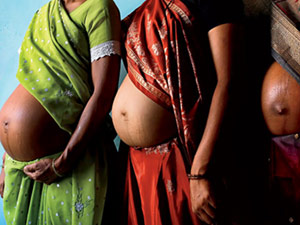When Do I Write?
After the kids have gone to bed, and come in (finally) for the
last time to get a glass of water/hug/reassurance from a nightmare/to see what
I am doing.
I know I should be kind and wonderful and warm at those times
- a mother from a TV commercial, a modern, brown, less operatic version of
Maria von Trapp -- but the sixteenth time they do it, I usually yell, “Mommy’s
got work to do – Go. To. Bed.” And then I feel bad, but not too bad, because I
do. Have work, I mean.
I always have work. There’s always something to write.
I write when they’re in school. The days I don’t teach.
After I exercise and shower, and before I have to pick them up. Which doesn’t
leave a lot of time, I must say.
Which reminds me: why isn’t the school day longer? Who can I
talk to about that?
Sometimes I write while I putter around the kitchen making
dinner and they sit at the table doing their homework. But that’s usually on
the sly – laptop on counter, attention cleverly divided in a thousand different
ways.
“Mama’s just checking a recipe, guys.”
One time, I tried to just sit down with them at the table
with the computer but the looks of hurt on their faces sliced any creative
thought clean from my mind.
I don’t have the same compunctions when it’s just my
husband.
When do I write?
Not on the weekends, at least not while they’re awake.
Unless there’s a deadline. In which case it’s usually on the couch with
everyone around me and I don’t actually get much done. But I don’t feel as guilty,
‘cause I let them sit on my outstretched legs and we take intermittent tickle
breaks - which are actually very helpful to most creative endeavors.
Seriously, there are studies that prove it. It’s well known
that Dostoyevsky – heck, all the Russian novelists – were quite fond of
tickling.
When my kids were babies and they still breastfed, I could
write and mother at the same time and sometimes feel like Wonderwoman doing it.
(Only sans the American flag hot pants and bustier.) I had the technique down
pat – if I sat up in bed with a back pillow and propped the baby’s head on the
arm rest, bent over at a fairly uncomfortable angle, and curved my arm around
just so, I could actually type with both hands while nursing. I liked to think
my body was so nourishing I could feed my child and the hungry computer screen
at the same time.
I was so full of crap.
But now at least my children are old enough they can read
what I write and want me to succeed so badly that last week, when I got a
letter from a publishing house about something else, they screamed and screamed
from the kitchen: “Mama, come quick! Someone is publishing your book! Someone
is publishing your book!” It actually hurt my heart to tell them they were wrong.
Why don’t I have an invisible plane? I think it could be a
useful way to sneak up on editors who have your manuscript and find out what
they really think of you.
When do I write?
I write when I can’t not
write. Which is most of the time.
Sometimes, it’s not even on paper or the computer, but in my
mind, on my skin, on the insides of my cheeks. I write like this in the car, in
the shower, when waiting in line at the grocery store. I keep promising myself
I’ll buy one of those teeny tiny tape recorders to capture the gems of my brilliant
thoughts as they spill pell-mell from my skull. But I haven’t had the time to
go get one yet.
Which reminds me, I need laundry detergent.
To read the rest of this essay please visit writer Anjali Enjeti's blog She Started It! I was honored and delighted to add my voice to the writers already there answering the complicated question: When do you write?





